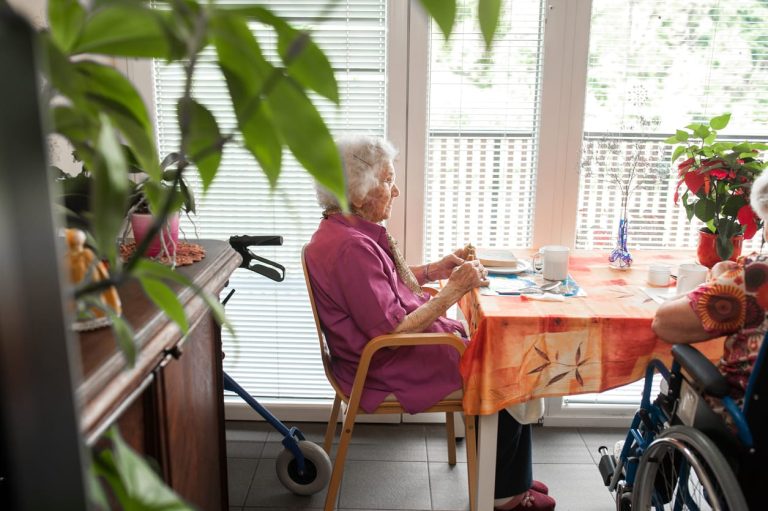Aging in place is an increasingly popular choice among seniors in the United States. For many, staying in the comfort of their own homes is essential for emotional well-being and maintaining independence. However, the reality of aging brings physical and cognitive changes, which can make traditional home setups challenging or unsafe. By implementing key home modifications for seniors, families can ensure their loved ones live comfortably and safely.
Why Aging in Place is Important
Aging in place offers numerous benefits, including emotional stability, financial savings, and continuity of lifestyle. According to AARP’s Home and Community Preferences Survey, 77% of adults aged 50 and older want to remain in their homes as they age. Familiar surroundings can reduce stress, maintain social ties, and help seniors feel a sense of control over their lives.
Financially, aging in place is often more cost-effective than transitioning to assisted living facilities, which can average $4,500 per month, according to Genworth’s Cost of Care Survey. However, without proper home adaptations, aging in place can pose risks, such as falls or accessibility challenges, which are a leading cause of injury among older adults
For families considering aging in place, conducting a thorough home safety assessment is a critical first step. Our blog shares how to identify and address potential hazards on conducting a thorough home safety assessment.
Key Home Modifications for Seniors
Adapting a home for aging in place involves addressing potential hazards and improving accessibility. Below are the most impactful modifications for various areas of the home.
1. Entrance and Exit Accessibility
Installing ramps and railings can make a significant difference for seniors with mobility challenges. Wheelchair-friendly ramps, for instance, provide safe access to the home and can be customized for durability with materials like aluminum or concrete. Adding railings and non-slip surfaces further enhances safety, especially during adverse weather conditions (ADA.gov).
If you’re considering these adjustments, combining them with proper footwear can further minimize fall risks. Check out our guide on choosing the right shoes to prevent falls for more insights.
2. Stair Modifications
For multi-story homes, stairs are a common barrier. Stairlifts, which range from $3,000 to $10,000 depending on the model and installation, are an excellent solution for ensuring accessibility. Alternatively, families can consider creating a single-level living space by converting ground-floor rooms into bedrooms and bathrooms. As explained in Lifeway Mobility’s guide, stair modifications can dramatically improve daily life.
3. Bathroom Adaptations
Bathrooms are among the most hazardous areas in any home. To improve safety, consider installing grab bars near toilets and showers, non-slip mats, and step-free showers. Walk-in bathtubs, which allow easy entry and exit, are another excellent option. Adjustable-height sinks and raised toilet seats can also enhance comfort and usability for seniors with mobility issues (National Institute on Aging).
For additional guidance on preventing household hazards, read our post on assessing home hazards.
4. Kitchen Adjustments
Kitchens can be adapted to meet seniors' physical limitations. Lower countertops and accessible storage options make meal preparation easier. Installing lever-style handles for cabinets and faucets allows those with arthritis or reduced grip strength to operate them effortlessly. Safety-focused devices, such as induction cooktops, help reduce the risk of burns. Articles on adaptive kitchen designs by HomeAdvisor provide additional insights.
5. General Modifications
Improved lighting throughout the home can prevent falls and improve visibility. Removing tripping hazards like loose rugs or clutter is a simple yet crucial step. Additionally, smart home technology, such as voice-activated lighting and security systems, can significantly enhance safety and convenience (AgingInPlace.org).
For seniors facing cognitive challenges, creating a dementia-friendly environment is key. Read more in our blog on dementia-friendly home design tips.
Cost Considerations for Home Modifications
The cost of home modifications can vary widely based on the type of adjustment and whether it’s DIY or professionally installed. For example, ramps can range from $500 to $3,000, while stairlifts may cost between $3,000 and $10,000 (HomeAdvisor). Bathroom renovations, including walk-in tubs and grab bars, might range from $5,000 to $15,000.
Families should explore financial assistance options, such as Medicaid waivers, VA benefits, or state grants, which can help cover the costs of modifications. For a comprehensive guide to government benefits, check out this article on senior care resources.
Additional Resources for Families and Caregivers
To ensure modifications are tailored to specific needs, consulting an occupational therapist or home safety expert is invaluable. Tools like home safety checklists can help families identify and address risks. Organizations like Assisted Living Locators also provide expert advice and resources for families navigating these decisions.
For broader insights on promoting safety and health for seniors, check out this related article on assessing home hazards.
Real-Life Success Stories
Many families have successfully transformed their homes to support aging relatives. One inspiring story comes from the National Institute on Aging, where a family installed smart home technology, a stairlift, and grab bars, allowing their grandmother to stay in her home safely. Such stories highlight the importance of proactive planning and professional guidance.
Another example, as discussed in our article on navigating home health care, shows how integrating modifications with in-home care services can improve both safety and quality of life.
Conclusion
Aging in place can be a safe, comfortable, and rewarding experience when the home environment is adapted to meet seniors' evolving needs. By implementing modifications such as ramps, stairlifts, and bathroom upgrades, families can ensure their loved ones live with dignity and independence.For personalized advice and resources on home modifications for seniors, reach out to Assisted Living Locators. Start planning today to create a home where your loved ones can age in place safely and comfortably.





